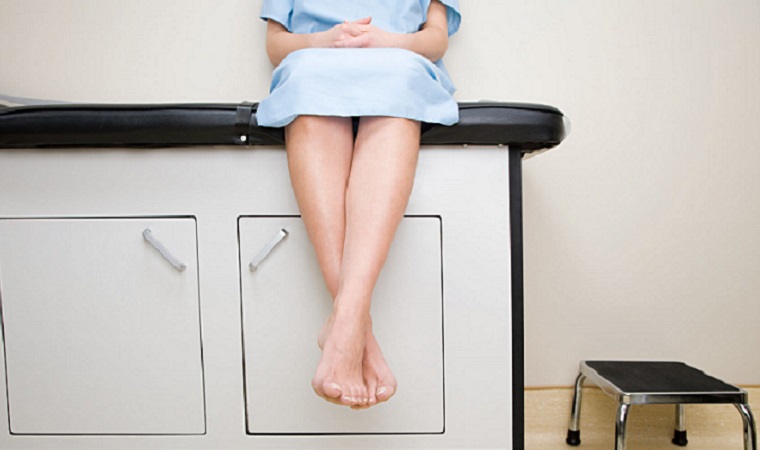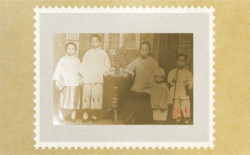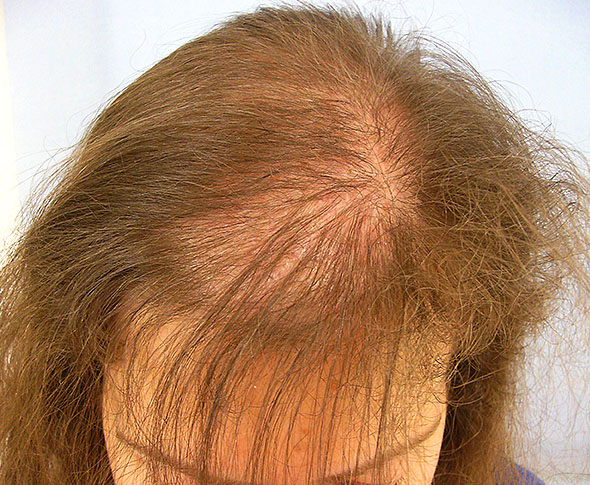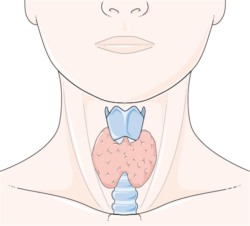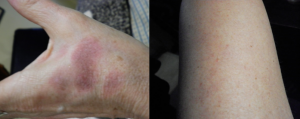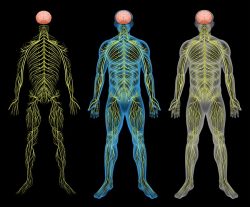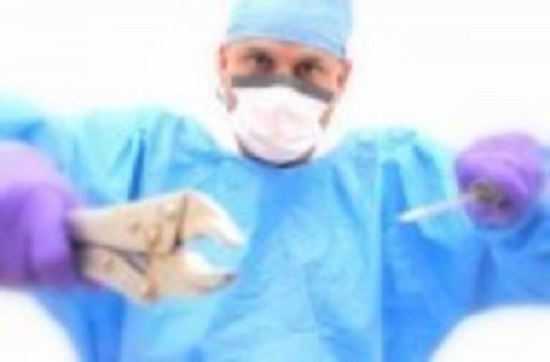I took an antibiotic called Cipro for a “suspected” kidney infection/UTI in November of 2016 and have been suffering from fluoroquinolone toxicity for over a year. I was only 30 years old. I say “suspected” because my urinalyis came back negative, as did my urine culture. I instinctively knew that I did not have a UTI because I didn’t have any of the common symptoms, I only presented with left flank and back pain. But, who was I to question a doctor? I would soon find out that not trusting my intuition was going to have catastrophic repercussions.
Before Cipro
Let’s back up and look at what was going on in my life that possibly set me up for fluoroquinoline toxicity. Five months before I took Cipro, I was in a car accident and had trauma to the left side of my body especially my rib cage and breast. I was a stay at home mom to a 7-month old that I was still nursing and a two year old. My husband worked 90 hours a week, and I didn’t have any family to help with my children as I healed from my injuries. Since I had experienced trauma and bruising to my breast, I developed chronic issues with mastitis, plugged ducts and breast pain. In attempt to keep my breast from getting infected and ducts unplugged, I nursed my son constantly throughout the day and night, every night. My body was exhausted, and I was completely run down mentally. I started having severe anxiety and panic attacks. I started drinking cappuccinos to help give me energy and keep me awake.
How does this relate to my fluoroquinolone toxicity? In the months leading up to this, I was under immense physical and mental stress that I suspect played a huge role in draining vital nutritional stores – not to mention my increased metabolic demands from lactation and two back-to-back pregnancies. People with high-energy needs, whether physical and/or mental, may be hit harder when a medication attacks mitochondrial energy.
The Downward Spiral of Being Floxed
Fast-forward to November 2016, I had been having pain in my side and back for a few days. I went to an ER clinic by my house and had a CT scan done to rule out kidney stones and other organs issues. They came to the conclusion that I had a kidney infection, and gave me a pain reliever via IV, which I thought was unnecessary, and prescribed me Cipro and Pyridium. I didn’t know anything about pharmaceuticals at the time and didn’t even recognize the name Cipro. No one mentioned any sort of warning of side effects or disclaimer about this drug at the ER or the pharmacy.
I went home and started taking the medicine. That night I could not sleep at all and thought that was strange. The next day I started having terrible burning during urination and thought, “This must be the UTI they were talking about!” It never crossed my mind that the burning could be a result of the antibiotic, so I went back to the pharmacy and got the Pyridium prescription filled.
Over the next few days, I kept feeling worse and worse. I even called the ER and asked about the results of my culture and if I should be put on a different antibiotic. They told me to just keep taking the medicine, and I would get better. I followed their instructions and continued. By the next week, I had developed severe vulvar burning. On my 10th and final day of my round of Cipro, I nearly fainted walking to the bathroom and truly felt like I was dying. I went back into the ER and told them about my severe vulvar pain and the fainting episode. The doctor performed a pelvic exam and tested me for STDs, which of course were negative. He didn’t even know the difference between the vagina and vulva, so that should have been a big red flag! He told me that his wife always gets yeast infections after taking antibiotics and wrote me a prescription for the antifungal Diflucan. I did not have a yeast infection, but out of desperation, went along with his rationale.
I went home and prayed that this medicine would help take the terrible pain away. That night, I started having strange sensations in my legs. It felt like something hot was running through my veins from the waist down. This terrified me, and I did not continue taking the remainder of the prescription. I have learned since then that antifungals like Diflucan can cause huge increases in oxidative stress.
The next few days were a total nightmare. I couldn’t eat. I couldn’t sleep. It felt like electricity was running through my body. I went back to the ER a final time and told them that something was seriously wrong with me and that it was like my body was out of control inside. The doctor asked me if I had a history of anxiety and wrote me a prescription for Xanax. I was offended and absolutely terrified. I left feeling completely and utterly alone. “This is NOT in my head,” I thought. Fortunately, I got off that medication merry-go-round and threw that Xanax prescription in the trash.
The next day I called a practitioner in my city that specializes in environmental medicine. I told him about the Cipro and my severe vulvar and urethral pain, and he brought up oxalate and told me to take calcium citrate and d mannose. I had never heard of oxalate before but was relieved that someone seemed to know how to help me and more importantly didn’t think I was crazy! It was Thanksgiving week, so I just kept telling myself if I could make it through the holiday, I would be OK once I saw the new doctor.
Contemplating Suicide: Cipro Poisoning is that Bad
By Thanksgiving Day, I was in such terrible pain physically and mentally. My ears felt full and were ringing. My eyes felt dry and irritated. I had peripheral neuropathy. My skin felt like it had been burned. My Achilles tendon and shoulder ached. It felt like someone had poured acid on my vulva and urethra. I would lie in bed an entire night with my eyes closed and not be able to fall asleep. At this point, I had gone days without sleep and could barely eat. I wrote letters to my children, emailed them to my husband and was making plans to kill myself. I certainly could not live like this and did not want my children to see their mother in this way. I emailed my new doctor (that I hadn’t met yet) and pleaded for help – keep in mind that this was Thanksgiving Day. His office wrote me back and told me that I could take dye free Benadryl up to 3 times a day for the irritation in my eyes and ears, arnica for the pain and sent a very comforting message. That was absolutely my saving grace. I definitely would have tried to kill myself if they would have not written me back. My plan became to take the Benadryl and just try sleep through this nightmare for the next few days until my appointment. I kept reminding myself, “If you can just make it to Monday…just survive until Monday.”
Monday rolled around, and I was hanging on by a thread. I limped into the doctor’s office first thing on Monday morning. I cried, no – more like bawled, for 90 minutes about how much pain I was in and how scared I was. He was incredibly comforting and compassionate. He listened, and he believed me. He told me the pain wasn’t in my head, it was real and to believe in myself. He reassured me that we would figure this out, no matter what, and that I would be OK. He gave me hope, which was the most important gift anyone could have ever given me.
The Power of Hope
I was so lucky to have a person in my corner that believed in me from the very beginning. If you are not as fortunate as I was, let this story be that for you. You will get better. You will be OK. Say it to yourself over and over and over, and truly believe it. “I’ll believe it when I see it” can be turned on it’s head into I’ll see it when I believe it. It’s not going to happen overnight, but you can find healing. The path is not linear; it has many ups, downs, and devastating setbacks. Many times, I would make huge gains and then seemingly overnight, feel like I was back to square one. Have I always made the “right” decisions? No, of course not. I have followed advice that has set me back many times. I have cried myself to sleep for weeks and weeks. I have been in so much pain that I have gotten my husband’s pistol out and held it to my head more times than I want to admit. Despite all this suffering, God has been so good to me. He has guided me on a path towards healing and has made me a better person through this experience. I no longer take my life for granted and feel as though my eyes have been opened in an incredible way. I am not completely healed, but I am living a full and happy life – and learning more and more everyday. So, what have I learned?
Surviving Fluoroquinolones
When I first started writing this, I was going to share every nitty gritty detail, but it was turning into a novel. I think people are less interested in hearing about my struggles and much more interested in learning what helped me feel better. I have experienced dozens of symptoms over the course of the last 14 months. The vulvar pain has been so severe at times that I was suicidal. I developed sensory issues with my ears that brought me to absolute despair. Everything was so unbearably loud that I had a difficult time going out in public. I would go to the grocery store and could hear a thousand different noises all around me. My heart would race, and all I wanted to do was scream and run away. It was overwhelming but made me empathize with autistic children that have complete meltdowns in public. For about 2 months, I had issues with my eyesight and couldn’t drive at night at all. For 4 months, my hair fell out in huge clumps to the point that I was scared to brush my hair or take a shower. I developed thyroid issues and was freezing cold all the time. This list goes on and on and if you want to know more, you can leave me a comment. For now, I’ll recap the things that helped me in chronological order. It’s important that I list it from the beginning to present day because of the way it led me to learn new things.
My Path to Recovery: Nutrients and Diet Matter
December 2016: The first protocol I was put on by my new practitioner was a gluten free/dairy free/sugar free whole foods diet. Food allergies and sensitivities can be causes of inflammation, so it was important for me to address these since I was trying desperately to heal. I lost 20 pounds in two months and my chronic rhinitis went away. Earlier in my story I mentioned oxalate. Oxalate is a toxin that occurs naturally in most plant foods but at very different levels – some low and others extremely high. For example, arugula is low and spinach is extremely high. You may have heard about oxalate before in reference to kidney stones, but we know from research that oxalate can go virtually anywhere in the body, not just the kidney. To complicate matters more, your body can make oxalate endogenously when deficient in vitamin B6, thiamine (B1) and/or when in oxidative stress. This is a big piece to my health puzzle that I didn’t understand at the time, so I did not focus on learning about it until a few months later. My practitioner only told me to take calcium citrate to “bind” to dietary oxalate and didn’t think it was necessary for me to do a low oxalate diet. Gluten free diets can unintentionally become high in oxalate, so I just wanted to make this note.
Recognizing and Fixing Nutrient Deficiencies
I started working towards boosting my vitamin and mineral deficiencies. Blood tests revealed that I was deficient in magnesium, vitamin D and B12. I started giving myself B12 injections every 3 days. This helped tremendously with lifting fatigue and giving me energy. I also began taking glutathione (liposomal), which is your body’s master antioxidant. It is an expensive supplement that I took for several months but could always tell that it helped to support my liver.
Blood tests revealed low thyroid levels. Interestingly, the thyroid can be used as a marker for adverse reactions as it is almost always attacked – a canary in the coal mine if you will. I learned later that the thyroid and thiamine share a reciprocal relationship. When the thyroid is suffering, mitochondrial damage is common and thiamine is low and vice versa.
I was having issues with my eyesight and painful dry eyes. I went to an optometrist and everything checked out to be fine.
January 2017: I had a stool test done that showed I had bacterial dysbiosis and was low in short chain fatty acids like butyrate. Not surprising after taking an antibiotic like Cipro! I recently read a fascinating study about how exercise can boost butyrate. Another reason exercise is good for us!
I was having severe vulvar pain, so I decided to “step up” my diet and try autoimmune paleo (a stricter form of paleo) along with avoiding high oxalate foods. I unknowingly was still consuming a diet high in oxalate.
I went to an OBGYN to be examined, and she did not think that the vulvar pain was related to me taking Cipro. (Eye roll.) My pap came back normal and a secondary test for HPV came back negative. However, I tested positive for a mycoplasma called ureaplasma urealyticum and showed no growth for lactobacillus (which is associated with microflora instability and suboptimal vaginal health.) I was given a prescription for doxycycline but was too afraid to take it.
I also began having sensory problems with my ears and was having continued struggles with tinnitus.
February 2017: I had a urine test done that showed I was deficient in vitamin A, vitamin E, alpha lipoic acid, thiamine (B1), riboflavin (B2), niacin (B3), pyridoxine (B6), magnesium and glutathione. It also showed that I had high levels of lipid peroxides indicating oxidative stress.
I used a holistic protocol to try and get rid of the ureaplasma, which included taking high dose vitamin C multiple times a day amongst other supplements. I continued taking 2000mg a day thereafter in hopes of boosting my immune system. After about 2 weeks, I developed a burning, stinging type nerve pain in an area that I had had shingles a few years ago. I learned later, that the problem with high dose vitamin C during oxidative stress is that after it is used, the product of those reactions is dehydroascorbic acid. Ascorbic acid is converted into downstream products once it becomes dehydroascorbic acid. This would include 2,3-diketogulonic acid, which is converted into oxalate without needing an enzyme. So maybe high dose vitamin C isn’t as innocent as we all thought?
At this time, I couldn’t wrap my head around oxalate and wasn’t convinced it had anything to do with me. I started eating extremely high oxalate foods on the autoimmune paleo list.
I went to an ENT and audiologist for the issues with my ears and everything checked out to be fine. It wasn’t fine, but I was used to doctors telling me that everything “looked fine” by now. The ENT thought my aural fullness was due to allergies.
March 2017: I was not doing well and felt worse than ever. My vulvar pain was excruciating, and it felt like I was urinating razor blades. My skin looked terrible. I was fatigued and spent most of the day on the couch watching my kids play. I decided that autoimmune paleo was not the answer I was hoping for and realized I should start looking back into the oxalate issue more.
I went to an urogynologist to get another opinion on my vulvar and urethral pain, and he also thought the ureaplasma was the smoking gun. He prescribed me doxycycline, but I just could not bring myself to take it. If ureaplasma was the sole reason to my pain, why does it wax and wane so much? I needed more information and starting digging through PubMed.
Blood tests showed that my thyroid levels were getting worse.
I saw my new primary practitioner (the nice one that believed me) and began getting low dose allergen immunotherapy shots.
April 2017: I was discouraged that my problems were getting worse and started to make plans to end my life again. I was going to try a few more things first and began another holistic treatment for the ureaplasma. Instead of trying to kill the mycoplasma, I tried boosting my lactobacillus. It seemed to work somewhat as it decreased the number of times I needed to urinate a day/night. What I did realize is that supporting my defenses, such as changing the terrain, seemed to be more effective than the conventional approach of trying to kill, kill, kill.
I started taking a mega dose vitamin B-complex transdermal patch.
After researching more into the oxalate issue, I decided to start a low oxalate diet and began reducing my oxalate intake slowly. I immediately started getting pain relief, which kind of blew my mind. It is highly recommended that you start this diet slowly to avoid “dumping” oxalate from your tissues too quickly which could lead to very uncomfortable symptoms or even a metabolic crisis.
I began to get hive like rashes on my legs.
I started taking quercetin to combat histamine/allergy symptoms and inhibit inflammasome activation. Although research supports many benefits of taking quercetin, I found out a few months later that it is a thiamine inhibitor. Taking high doses of quercetin, multiple times a day, is NOT a good idea for someone like me with thiamine issues.
May 2017: Things began looking up. I still had vulvar and urethral pain most days but the pain was less severe. Some days I had no pain at all! This led me to start being able to live a much more active life.
I had, what I presume to be, my first “dumping” of oxalate experience and had widespread, all over burning pain. I learned that increasing minerals like magnesium and taking Epsom salt baths can help with “dumping” symptoms.
My hair started falling out in huge clumps.
I went to my primary practitioner and got a second round of low dose allergen immunotherapy and a prescription for thyroid medication.
June 2017: I had a bad reaction to the thyroid medication. It gave me terrible chest pains, so I did not continue.
I had a two-week stretch where I felt really good. I was used to having more bad days than good (actually, in the beginning, it was all bad days), so I was elated to see such improvement. I thought I could go back to “normal” and started enjoying summer time treats like coconut ice cream and having a few tequila cocktails. Sugar and alcohol are big no-nos when dealing with thiamine deficiency.
July 2017: I started developing neurological symptoms. My left foot was numb, and I had burning and tingling in my hands and feet. I felt really strange and out of it. I even couldn’t remember my own son’s birthday.
I started getting a hive in the exact spot of the injection site of my allergy shots almost every day.
I had blood tests done that showed low white and red blood cell counts. I continued to have low thyroid levels, although they looked better than they did in March.
I had developed a friendship with oxalate guru and researcher, Susan Owens, and asked her to look at some of my previous lab work. She was concerned about my thiamine status for many reasons, and after noticing that I had elevated alpha ketoglutaric acid, was seeing a possible connection to endogenous production. There is plethora of research on vitamin B6, and it’s relationship with endogenous production of oxalate (here and here) because of its association with Primary Hyperoxaluria Type 1. It’s not as clear what role thiamine plays in endogenous production. There is a limited amount of research on thiamine dependent enzymes that help to prevent us from making oxalate. I haven’t done an Organic Acids Test to see if I have any markers indicating endogenous production, but I do know from my previous urine test that I am in oxidative stress. We know from research that humans do produce oxalates endogenously when under oxidative stress. In conjunction with a low oxalate diet, addressing oxidative stress is an important part of the approach in reducing oxalate issues.
I started researching thiamine deficiency, and it led to me to Hormones Matter. After reading all of Dr. Marrs‘ and Dr. Lonsdale’s articles, I was having light bulbs go off left and right. There was a specific piece written on beriberi that I was like THAT’S ME! I do not know if my thiamine issues are related to endogenous production of oxalate, but what I do know is that I have thiamine deficiency disease also known as beriberi.
August 2017: I tried taking Benfotiamine, a form of thiamine supplement, and had terrible chest pains. My chest hurt to the point that I thought I was having a heart attack. I reached out to Dr. Marrs who is a thiamine expert and asked if this was a normal reaction. Chest pains are common in people with a longstanding deficiency but due to the way they are metabolized, some forms of thiamine are tolerated better than others. Dr. Lonsdale wrote an article about the different forms of thiamine supplements, so I decided to try one that he recommended called Lipothiamine. Lipothiamine crosses the blood brain barrier, so you get the positive effects of thiamine both inside and outside the brain. Another unique attribute of Lipothiamine is that it does not require the thiamine transporter protein that enables the absorption of thiamine into cells. If you have any genetic defects in these transporters, which I highly suspect I do, then this is a great option for you. Side note – a family history of alcoholism can cause issues with thiamine transporters. Looking into your family’s health history may be helpful in putting pieces of your puzzle together.
After starting Lipothiamine, my whole life changed. Not to mention my hair stopped falling out! A reoccurring thought I had been having on this journey was, “Why does life seem so hard for me when everyone else makes it seem easy?” Lipothiamine made my life easy. It was no surprise to me when I read that beriberi literally means “I can’t, I can’t.” With thiamine supplementation, I was able to live a fully functioning life for the first time in a very long time. Over the next three months, I was able to start going to a bible study, church, yoga and meditation classes, counseling and able to get a part time job on the days my children go to school. It was absolutely life changing.
I did have to experiment with my dosage. I started out taking 50mg and moved up to 100mg the following week. I started having intense burning in my legs and feet, so I moved back down to 50mg. I suspect that this triggered dumping of oxalate, but that’s just a speculation based on the experience of others. Magnesium is cofactor for thiamine, so it’s important to take enough magnesium for thiamine to work properly.
September 2017: After 6 weeks of taking Liptothiamine, I had some blood work done. My thyroid numbers were looking much better. I was ecstatic to see such improvement in my thyroid labs without taking medication. Things were moving in the right direction except that my absolute eosinophils were high.
October 2017: I was getting stronger and able to start practicing yoga multiple times a week. I was seeing huge gains in health and happiness from working out.
I was still having burning sensations on and off.
I started seeing a medical massage therapist. Each session gave me temporary pain relief from the neuropathy and helped me overall feel better.
I started having consultations with Monique Attinger, the Low Ox Coach. She is an oxalate and nutrition expert and moderator of the Trying Low Oxalate Facebook Group. I wish I would have had sessions with Monique from Day 1. She is extremely knowledgeable on this complicated issue. She helped me navigate through a lot of anxiety I was having regarding food and eating out.
November 2017: I joined my husband on a work trip to the mountains for five days. I had been feeling good and thought this could be a great opportunity to celebrate our anniversary after a very difficult year. I was doing OK for the first few days but could definitely feel the effects of the altitude. On the third night, I started to feel like I was having difficulty breathing, almost like a suffocation feeling, even though I was breathing normally. I experienced the same air hunger sensation on the following night and begged my husband to drive me down to a lower altitude. On the fifth day, I flew home but was still having strange symptoms – even though I was back down to almost sea level. I continued to have air hunger that waxed and waned and had thick brain fog. It felt like my brain was broken, and I couldn’t think at all. I also noticed changes in my speech and felt myself tripping over words at times. This setback lasted for a few weeks and was absolutely devastating to me. I cried and cried and was discouraged at the thought of having to start over after so much hard work and progress. While in the mountains, the altitude acted as a stressor, and my body didn’t have reserves yet to respond to any stressors. The air hunger comes from the brainstem as an autonomic reaction. I found a study showing that mice needed 4x’s the supplementation of vitamins at high altitudes in order to normalize processes. So, I actually needed to be taking much more thiamine than normal.
I started my new job despite not feeling well.
December 2017: I had a busy month working, parenting and keeping up with the holiday festivities. The magic of Christmas kept me positive, and I started to recover from my setback.
I was still having the widespread burning on and off and had some numbness/tingling in my foot.
January 2018: So, here we are back to present day. Overall, I’m doing really well and am trying to take things a little easier after a busy holiday season. I am not completely symptom free, but I am tremendously better than I was when this journey started. Most importantly, I am happy. I currently started supplementing with a transdermal vitamin D patch. Vitamin D is the backbone of the immune system, and I am not getting much sun lately with the cold weather. There are a few more supplements that I am interested in trying like riboflavin, biotin, vitamin A, MSM and MitoQ.
In closing, I hope that my story can help spread awareness of the dangers and devastating effects of fluoroquinolines. I’m still learning new things everyday and am hoping to someday be better and healthier than I was before Cipro. I have had a funeral for my old life and am slowly finding a different and better me. I am taking this injury as an opportunity to love more deeply and hoping to help others through my experience. My best advice is to always trust in yourself, do the best you can with your nutrition, and take your thiamine. Give the rest to God. If you believe in your inner strength, you’ll see it every time you face a crisis.
For more information on oxalate and the Low Oxalate Diet, please go to the Trying Low Oxalates Facebook group. Susan Owens has provided all of her research in the files section, and the moderators and members are wonderfully helpful.
For more information on thiamine, please read the articles by Dr. Marrs and Dr. Lonsdale on Hormones Matter. They have also written an incredibly informative textbook called Thiamine Deficiency Disease, Dysautonomia, and High Calorie Malnutrition.
Thank you to God and all of the amazing women researchers that helped me find healing.
We Need Your Help
Hormones Matter needs funding now. Our research funding was cut recently and because of our commitment to independent health research and journalism unbiased by commercial interests we allow minimal advertising on the site. That means all funding must come from you, our readers. Don’t let Hormones Matter die.
